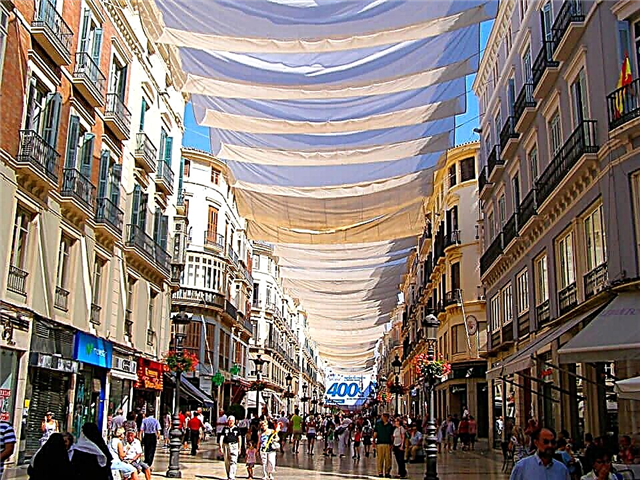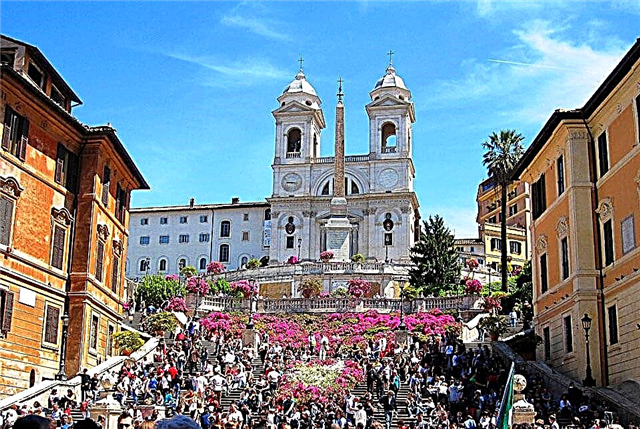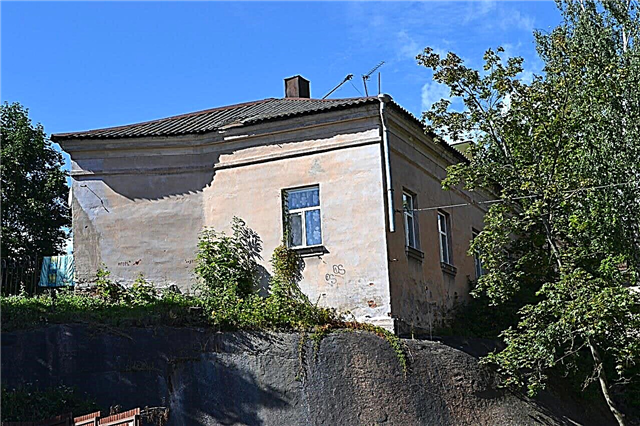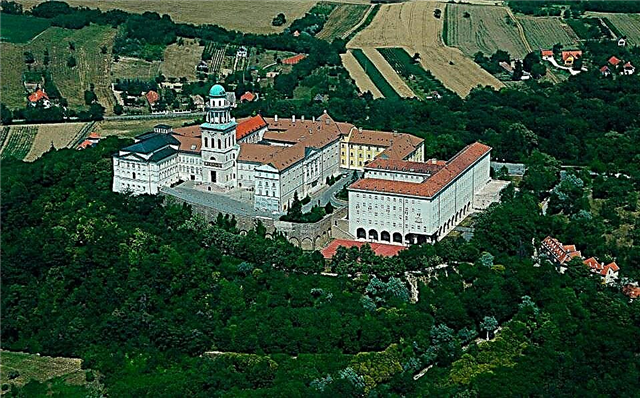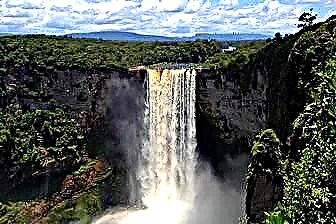The city-state of Gibraltar is located in the most strategically important place on the planet - at the exit from the Mediterranean to the Atlantic Ocean. Many people come here to see Africa while standing in Europe. You can explore the city not only in breadth, but also by climbing the rock, towering gigantic in the middle of the peninsula. This is the main attraction of Gibraltar. For tourists, there is expanse here - observation platforms with picturesque views, a nature reserve with rare monkeys, labyrinths of tunnels, a suspension bridge.
Given the geographical position of the city, there have been many bloody battles and wars in its history, so a large number of bastions, casemates, fortress walls, fortifications and defensive posts have been preserved here. Most of them have been restored and are available for inspection.

The best hotels and hotels at affordable prices.
from 500 rubles / day
What to see and where to go in Gibraltar?
The most interesting and beautiful places for walking. Photos and a short description.
Rock of Gibraltar
Occupies most of the country's territory. Height - 426 meters, length - 5 km, width - 1200 meters. Age - about 200 million years. It consists of limestone rocks that erode over time and form caves. There are more than 100 of them, the largest and most visited is St. Michael. Part of the rock is part of the reserve, the most valuable of its inhabitants are the Barbary macaques-magots and partridges. Tourists are attracted by the unique labyrinth of tunnels carved into the rock in the 18th-20th centuries.

Magots
This species of narrow-nosed tailless macaques is a kind of symbol of Gibraltar. On the territory of Europe, only here they live in their natural environment and enjoy complete freedom - they stick to tourists, steal food, and enter their homes. On the rock is their fiefdom - the Apes Den nature reserve. You can observe magots, take pictures, but it is forbidden to feed them. According to legend, as long as the monkeys are alive, Gibraltar will remain in British possession, therefore they are loved and protected.

Ocean village
Resort complex with excellent infrastructure. It includes a 5-star Sunborn hotel, residential apartments, a large office center. On the embankment there are many boutiques of the most fashionable brands, restaurants and bars, nightclubs and casinos, and other cultural and entertainment establishments. The marina in this area has over 300 berths and can accommodate ships up to 100 meters in length. Boat trips along the Iberian Peninsula are popular.

Gibraltar airport
Taking off and landing of airliners at the local airport is quite spectacular. The fact is that due to the lack of space, the runway is very short - 1828 meters, and, moreover, is surrounded on both sides by the sea. It also crosses Gibraltar's busiest highway. It has to be blocked by barriers in order to let the next plane pass. Due to the proximity of the strait, the weather in the area is unpredictable. But, despite all the difficulties, the airport receives up to 30 planes every week.

Catalan Bay
This is the name of the bay at the eastern foot of the cliff, the sandy beach and the village located on the shore. The local beach is the second largest in Gibraltar, but the most popular among tourists and residents of the peninsula. Its history dates back to the 17th century. Today it is a picturesque, very clean and well-maintained recreation area with cafes and restaurants specializing in seafood. Nearby - parking, bus stop. Within walking distance is the Caletta Palace hotel.

Casemates Square
It got its name from the soldiers' stone barracks built during the period of British colonization. Today they have been converted into the Crafts and Arts Center. Along the perimeter, the square is surrounded by museums, cafes and bars, souvenir shops. In the center there is a monument dedicated to the soldiers of the Gibraltar regiment. The building of the Healthcare Administration is also located here. The square is always noisy and crowded. Various festivals, concerts, celebrations are held.

John McIntosh Square
Since 1940, it bears the name of a well-known in Gibraltar merchant, philanthropist and philanthropist who lived in the late 19th and early 20th centuries. Before that, it was called the Marketplace. Leads its history from the XIV century. Today, the main buildings of the city are located here - the city hall and parliament, as well as the Tourist Information Center. Since 1992, it has been the venue for the official celebrations of Gibraltar's National Day on 10 September.

Gibraltar Museum
The opening took place in 1930. The museum displays reflect the main stages in the history of Gibraltar. Here are the remains and tools of primitive people, exhibitions, ranging from the Phoenician to the British period. As well as extensive collections of weapons from different times, prints and lithographs, local flora and fauna. The museum complex includes unique Moorish baths of the XIV century. There is a small gift shop.

Church of St. Mary the Crowned
Center for Catholic Worship in Gibraltar. It dates back to the 15th century - the time of Spanish rule. After the Great Siege, the building was badly damaged. The governor offered to restore it to replace part of the land that belonged to the church. It was used to redevelop Main Street. In 1820 the clock tower was completed. The statue of a soldier at the entrance to the cathedral was received as a gift from the British Army Corps - Royal Engineers.

Trafalgar cemetery
The first burials appeared in 1798. Although the name of the cemetery is associated with the legendary battle of 1805, only 2 of its participants are officially buried here. But there are several dozen unmarked graves that may well belong to British sailors. Basically, in the territory of a small cemetery, those who died in other battles of 1801-1812 were buried. And also the victims of several fever epidemics that occurred in the early 19th century.

Gibraltar Botanical Garden
The date of foundation is 1816. Area - 6 hectares. There are about 2 thousand interesting species of tropical vegetation and trees. Some are over 200 years old, including the Dragon tree, Pine Pine, Olive tree. On the territory of the botanical garden there are the Summer Theater, the Wildlife Park with exotic animals, the Italian Dell Garden with ponds and waterfalls, and a playground. As well as monuments to General Eliott and the Duke of Wellington.

Moorish castle
It was originally erected in the 8th century and radically rebuilt 6 centuries later. It is considered the largest defensive structure of the Moorish period in Europe. It is located in the northwest of the rock massif. Consists of the surviving fortress walls, gates and a 100-meter tower. The walls of the complex are littered with potholes from cannonballs and artillery fire. Today, a museum is open here, only 4 rooms at the top of the tower are available for visits.

Artillery batteries and structures
One of the main military components of Gibraltar - coastal artillery - has now been turned into a tourist business. At the top of the cliff is the O'Hara battery. Its main exhibit is a powerful 9.2-inch cannon. The southernmost battery, Fort Harding built in 1859, contains a 12.5 mm cannon weighing 50 tons. The battery of Princess Anne of the 18th century consisted of 9 cannons, in the 19th century 5.25-inch guns were added, 3 of them in closed towers, 1 underground.

Tunnels of the Great Siege
Unique defense system of Gibraltar. The labyrinth of tunnels was built in 6 weeks by the British to defend against the combined forces of Spain and France in 1779-1783. They were carved by hand on the northern side of the cliff. Largely thanks to the guns moved here, England was able to win.During the Second World War, the tunnels were significantly expanded. Today, exhibition halls are open here, where cannons, soldier dummies and other exhibits of military history are displayed.

Tunnels from the Second World War
Siege tunnels were continued in the military 40s, their total length was 50 km. They served as a shelter for local residents, and also there were warehouses with ammunition, ammunition, provisions. Today, only a few of them are accessible to tourists, converted into a military museum, serve as a venue for exhibitions and theatrical performances. Most of the labyrinth is still owned by the military leadership and is closed to the public.

Cave of st michael
A mesmerizing work of nature-craftswoman. The largest of the hundreds of caves of the Rock of Gibraltar. Located at an altitude of 300 meters. It is famous for its huge stalactite formations, which look fantastic in the light of multi-colored searchlights. It has 3 entrances and exits, numerous halls at different levels. The largest of them hosts classical music concerts. In the lower caves there is an underground lake. Traces of cavemen and rock paintings were found here.

Mediterranean Steps Trail
The route is recommended only for prepared tourists. Created by the British military in the 18th century on the scale of a communications system. With the help of steps, access to defense posts and firing points on the rock was established. The trail starts at the Pillars of Hercules, passes through the nature reserve, along the eastern part of the cliff, and ends at its very top, near the O'Hara and Lord Airy batteries. The length is 1800 meters. In 2007, the steps were reconstructed.

Windsor suspension bridge
The opening took place in 2016. A bridge was built over a 50-meter gorge on the territory of the Upper Skala nature reserve. Length - 71 meters. On both sides, it is firmly attached to the walls of the rock with the help of large supports installed at a depth of 12 meters. But still, during the passage there are small fluctuations, which adds a portion of thrill to an exciting walk. But mesmerizing views of the city below and seascapes make you forget about the fear of heights.

Cable car
Connects the city center to the top of the Rock of Gibraltar. It was opened in 1966 and was subsequently modernized several times. The lower station is located near the botanical garden. The length of the road is 673 meters. Travel time is 6-7 minutes. The cabins are designed for 30 people. There are several observation platforms, cafes, and a souvenir shop near the upper station. The trip includes a stop at the middle station, near the Monkey Den, but only from November to March.

Cape Europe
An excellent observation deck, from where you can see the African coast in clear weather. The southernmost point of the peninsula. Here stands the Trinity Lighthouse, built in the 19th century and now operating. The light from it is visible to all ships passing along the strait. Since 1994 - fully automated. There are other noteworthy objects - a mosque, a Catholic chapel, a monument to General Sikorsky who died in 1943, coastal artillery guns, a large playground.


